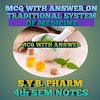T.Y B. PHARM SEM - V
PHARMACOGNOSY & PHYTOCHEMISTRY – II
EXPERIMENT NO 07
AIM: TO ISOLATE CAFFEINE FROM TEA POWDER
REFERENCE:
1.
, , A Comprehensive Guide,
Edition 1st Published by Nirali prakashan, Page no. 5.8
2.
Dr. Anup K. Chakraborty, Sushma M.
Rathod. “Practical in pharmacognosy & phytochemistry – II. Edition 2019,
published by S. Vikas & company (Medical publisher), Page no. 34 – 36.
REUIREMENTS:
Apparatus: Separating funnel,
Beaker, Stirrer, Funnel, Water bath, heating mantle, Porcelain dish, Measuring
cylinder, Analytical balance etc.
Chemicals: Chloroform, Water. Tea powder,
INTRODUCTION:
TEA:
Synonym: Tea plant, Tea shrub, Camellia thea
Biological
source: It consists of dried leaves and leaf bud of Thea
sinensis.
Family: Theaceae
Chemical
constituents: Nearly 4000 bioactive compounds contains
in tea of which one third is contributed by polyphenols.
A
large group of plant chemicals that includes the catechins (flavanols).
Major
catechins are (-)-epicatechin gallate (ECG), (-)-epicatechin (EC),
(-)epigallocatechin (EGC) and (-)-epigallocatechin gallate (EGCG).
Green
tea contains high concentration of these catechins than black tea.
Other compounds are purine alkaloids viz., caffeine, theophylline and theobromine. Trace compounds present in tea are amino acids, carbohydrates, proteins, chlorophyll, volatile organic compounds (chemicals that contribute to the odor of tea), fluoride, aluminum, minerals.
Uses: CNS
stimulant, Diuretics, Antioxidant, Anticancer, Anti-Ageing effects, Obesity,
Weight loss.
Caffeine:
Caffeine
is a naturally occurring substance found in the leaves, seeds or fruits of over
63 plant species worldwide and is part of a group of compounds known as
methylxanthines. The most commonly known sources of caffeine are coffee, cocoa
beans, cola nuts and tea leaves. Caffeine is a bitter, white crystalline
xanthine alkaloid that is a psychoactive stimulant drug. Caffeine is pseudo
alkaloid as it is not biosynthesized O CH, from amino acids, but gives all
alkaloid identification tests positive.

Properties:
Color:
White powder, White needles.
Odour:
Odourless
Taste:
Bitter
Solubility: Anhydrous caffeine is soluble in chloroform and alcohol. Sparingly soluble in water but solubility increases in water at 80 degree.
EXTRACTION METHODS.
1.
Weigh 10 g of tea leaves and transfer to
250 ml distilled water. Boil the water for 30 minutes with occasional Stirring.
Then allow to cool and filter the solution.
2.
Take filtrate in a separating funnel and
to it, add 100 ml chloroform. Shake vigorously so that total caffeine will be
transferred to chloroform.
3.
Separate chloroform layer.
4.
Evaporate chloroform over water bath.
White caffeine Crystals will collect at the bottom.
RESULT: The
caffeine was isolated from tea powder. The percentage yield of caffeine was
found to be……………..













0 Comments
Please do not enter any spam link in the comment box.